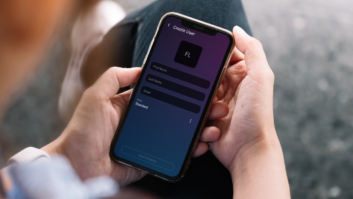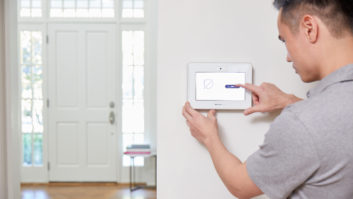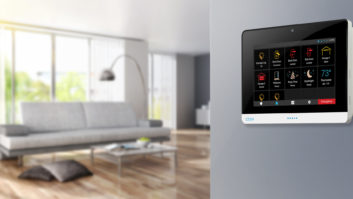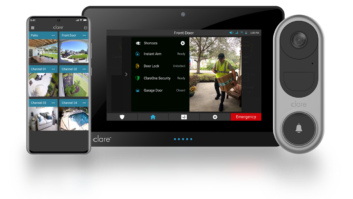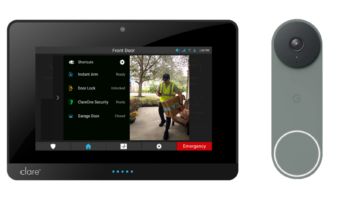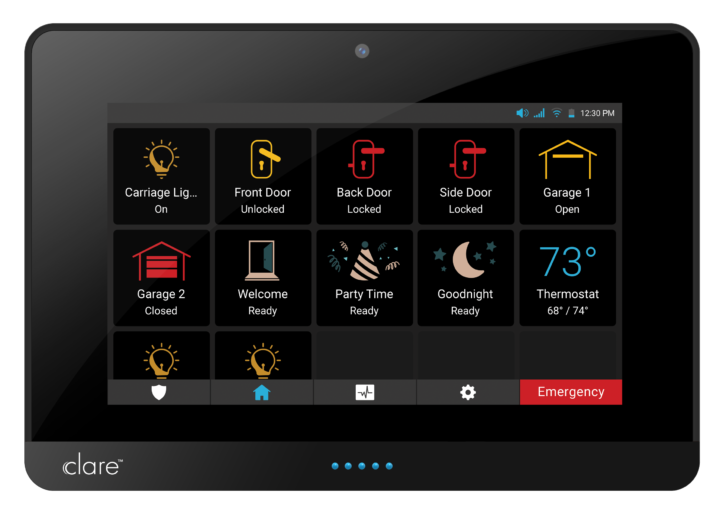
Clare sent me their new ClareOne panel to demo earlier this month. The CI channel has flirted with introducing a security solution of its own for years, but the ClareOne is the first serious contender in a long while (maybe ever). Integrators have long relied on relationships with the likes of 2GIG, Honeywell, Qolsys, and others to add security features to their solutions. In a world where security systems are increasingly able to add smart locks, lighting, etc., some of these solutions are now perceived threats to the idea of a single smart home platform controlled by the integrator. Would ClareOne live up to the hype? I set off to find out.
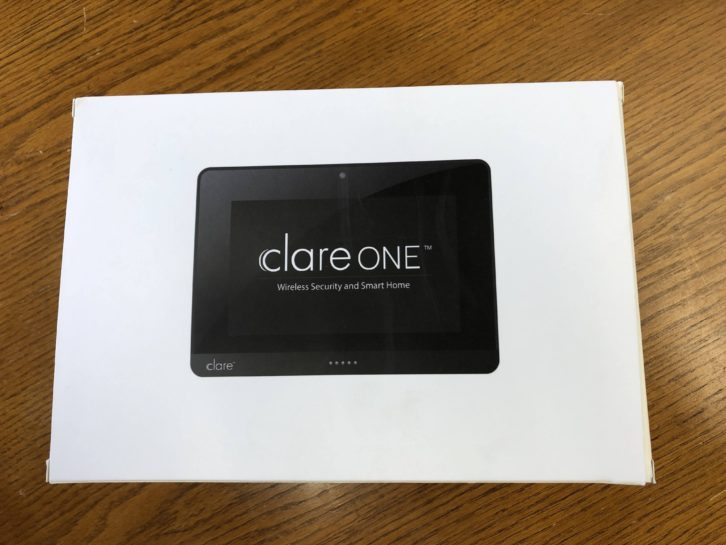
Unboxing
I opened up an unassuming cardboard box to reveal the ClareOne panel, keyfob, motion detector, water sensor, door/window contacts, IP camera, smoke detector, and a rate of rise sensor. Clare’s recently launched smart video doorbell wasn’t part of my evaluation. All the gear featured QR-code-based quick start guides tucked inside the top of each box.
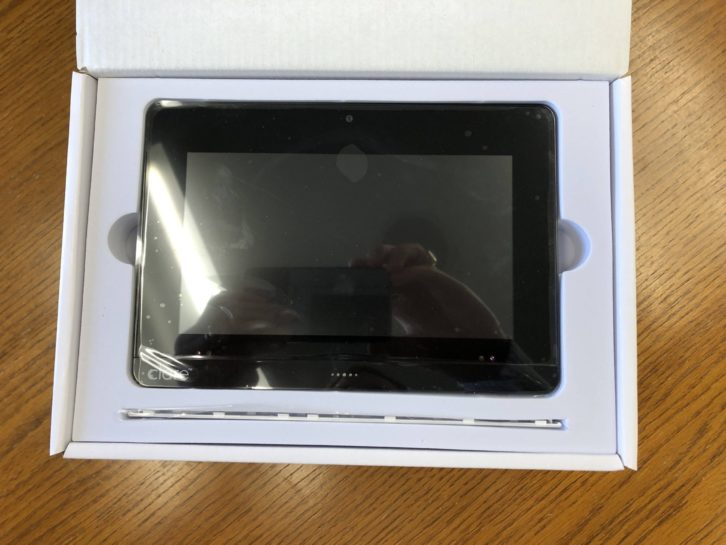
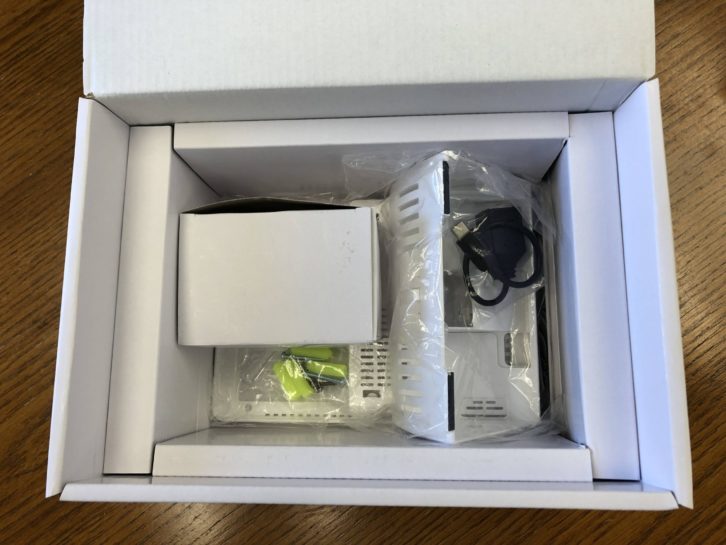
Installation
Clare senior sales engineer Jerry Bulda offered to guide me through the setup and configuration process. We scheduled a Zoom call early one hot Thursday morning and got rolling after I grabbed an ethernet switch and a power strip.
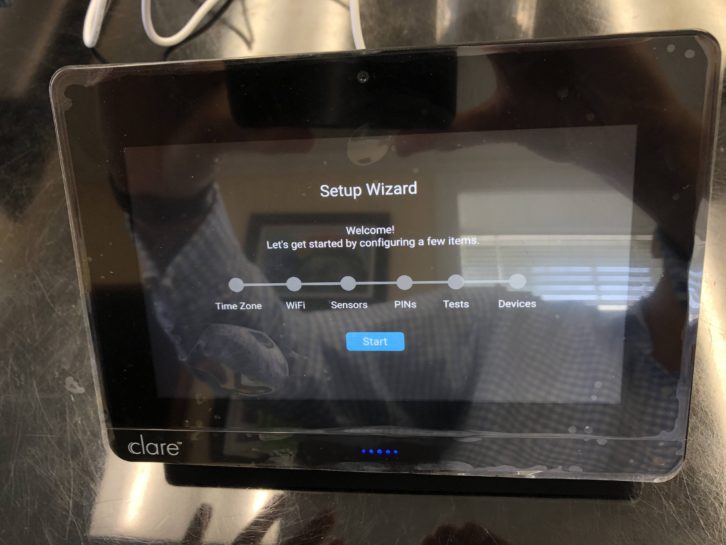
Jerry asked me to boot up the ClareOne panel and a simple wizard appeared, driving us through configuring time zone, Wi-Fi, sensors, PIN codes, testing, and, finally, adding Z-Wave devices such as lights and locks. I tapped through the menus and set our installer and master PIN. This important distinction allows the homeowner access to most of the panel, but reserves some functionality for the dealer to prevent the client from getting into trouble (and competitors from stealing your accounts!).
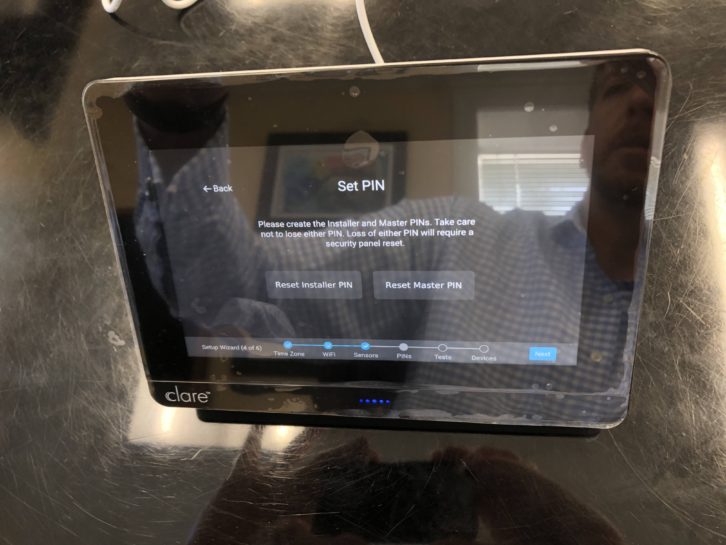
After we’d set up the basics, Jerry had me log into FusionPro, Clare’s cloud dashboard. We clicked over to the “Accounts” tab and chose “Add Account” to pair the ClareOne. I added the system street address and then added the “UUID” from the panel’s box to complete the connection. Clare also offers the ability to use the device’s camera to scan a QR code for quick enrolling (which came in handy later as we added sensors).
After pairing the ClareOne panel with FusionPro, the touchscreen prompted us to perform a system update. We ran the update and then back to FusionPro to pick the subscription plan that made most sense.
Clare offers several plans ranging from a free tier to dealer cost price points well below their competitors (Clare doesn’t set any MSRPs for their plans, and asked me not to publish rates in this article). This is where Clare starts to set itself apart from other alarm vendors. Here’s a brief overview:
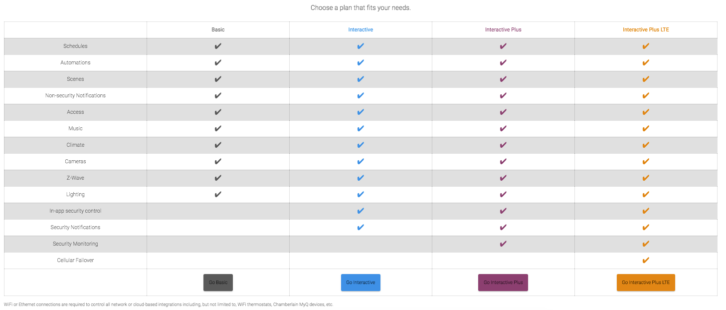
Basic – Smart Home: FREE
- Full control over all Clare smart home features
- Includes homeowner-created scenes, schedules, notifications, and automations via panel and app
- Excludes monitored and remote security features
- Security can be armed/disarmed from the panel
Interactive – Self-Monitoring: Open Pricing
- Everything in Basic
- Full control over Clare smart home automation and security
- Self-monitored security using push notifications, email, and text to the ClareHome app
Interactive Plus – Professional Monitoring: Open Pricing
- Everything in Interactive
- Enables central station alarm reporting over the home’s IP network (plus optional self-monitoring)
Interactive Plus LTE – Professional Monitoring with Cellular: Open Pricing
- Everything in Interactive Plus
- LTE Failsafe Backup
- Two-Way Voice with Central Station
I chose the Interactive Plus LTE plan and we rolled into the next FusionPro screen, which showed us a checklist asking if we’d completed all the steps necessary to ensure a happy customer. I loved this feature. How many times do we hope and pray our installers are doing things the same way each time? Kudos to Clare for enforcing a standardized installation blueprint each and every time. FusionPro also introduces industry-first OvrC support for a security panel. Integrators or remote managed service providers can now manage the ClareOne alongside all the other home technology from a single dashboard.
It was now time to start adding sensors. Thanks to the ClareOne panel’s easy touchscreen interface, adding all of them in was a snap. In no time at all I’d paired and labeled all of them, including doors, windows, smoke detection, heat sensing, and water sensing. This process was very similar to other security panels, and integrators should have no issue re-training their installers to pick up this new panel.
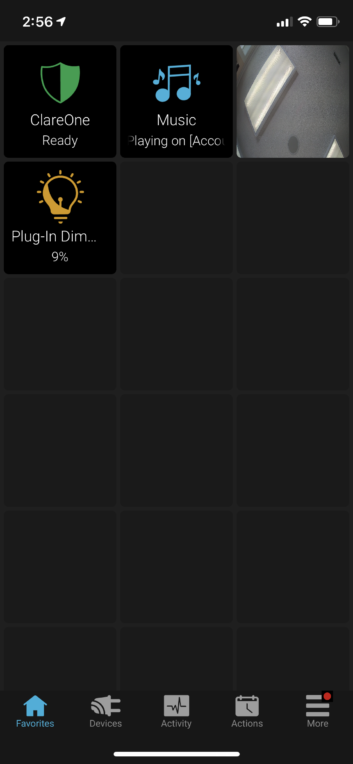
Jerry let me know it was time to add in the rest of the technology to finish things up. I fired up the IP camera and used the QR code photo method to add it through a separate app called ClareVision Plus. After a few seconds, I saw a live video feed show up in the app and we moved on to the rest of the devices, which included some lighting controls and a Sonos audio system. It all went very smoothly and, in the case of Sonos, there wasn’t any configuration needed. ClareOne found our existing system and paired with it seamlessly. In addition to the devices I added, Clare boasts a driver database filled with thousands of integratable devices (another place where Clare stands alone against its competition).
I downloaded the ClareHome app and logged in to make sure everything we added showed up properly. The app uses a tile-based interface that allows the user to customize the app to suit their needs. It’s easy to add security, music, locks, lights, and more as favorite tiles in any order. I decided to keep things simple and added the ClareOne security system, Sonos, the IP camera (which shows a live thumbnail on the app home page), and lighting controls. It took me a few minutes to get used to the tile user experience, but I grew to like it very quickly. In a world where Clare is catering to integrators making the move into security, touting this level of customization is very appealing.
Final Verdict
For integrators who haven’t made the leap into selling security monitoring or are tired of their current offering, ClareOne (MSRP $499) offers a compelling alternative to the current roster of offerings out there. When you factor in their driver support, low-cost RMR, and OvrC support, there’s a strong case to add the ClareOne to your line up. There are thousands of traditional AV and control integrators out there who need to be gently guided into the profitable world of providing home security services. With RMR solutions starting at “free,” Clare looks poised to grab an entirely new set of customers that the traditional security world is ignoring. I’m excited to watch their product roadmap unfold as 2020 finishes up with voice assistant support, further Control4 integration, and more focus on IP video integration.
Related: Hands On – FLO by Moen
